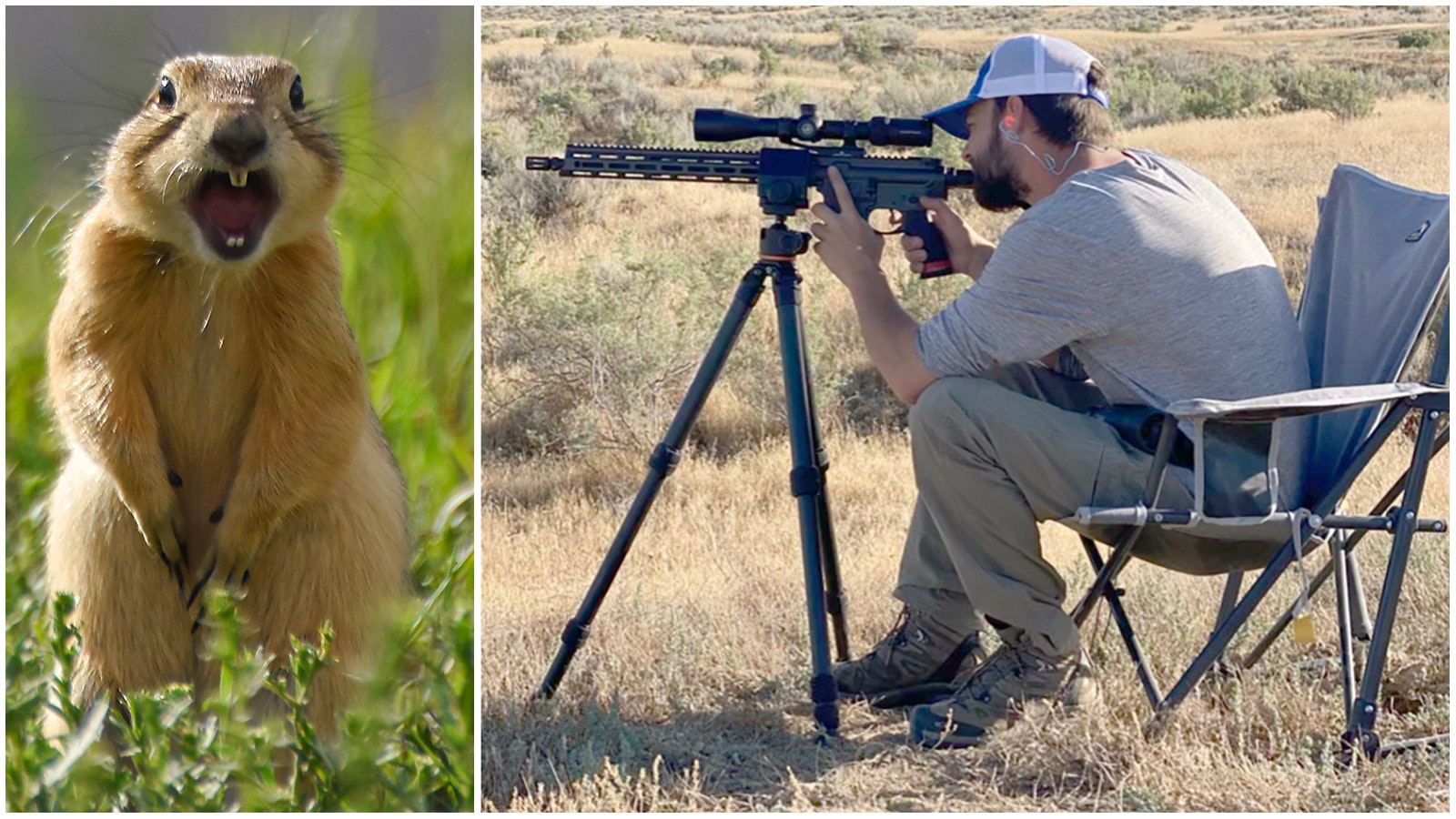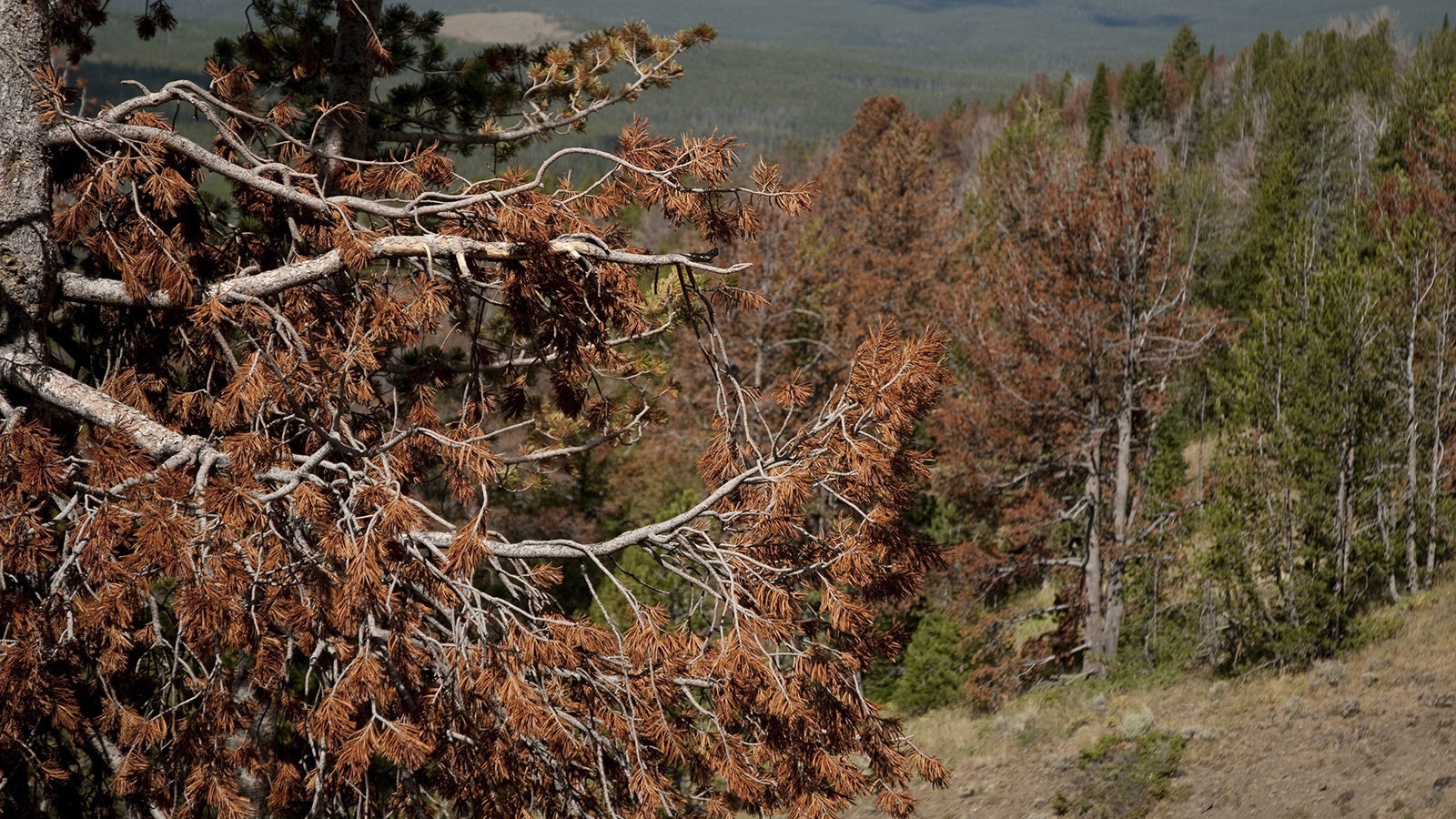Dan Kinneman still remembers making a jaw-dropping kill on a prairie dog from well over a mile away near Rock Springs.
“July 9, 2005 … 2,157 yards,” the Riverton resident told Cowboy State Daily.
A mile is 1,760 yards.
“He was a young one, not like those big, fat prairie dogs you see down in Colorado, Kinneman added. “I think the bullet just brushed the side of his neck, and the concussion of the bullet passing by is what actually killed him.”
He made the shot with a 220-grain match-grade bullet from a .300 Remington Ultra Magnum rifle that he’d custom built himself. Prairie dog shooters generally use lighter-caliber rifles and fragmenting bullets.
But at such an extreme range, smaller cartridges and lighter bullets – which are much more susceptible to the effects of wind – wouldn’t have cut it, Kinneman said.
He still has a taxidermy mount of the ill-fated rodent in his home, complete with a .300 RUM bullet clenched between its teeth.
Opportunities Getting Scarce
While reflecting on the shot, Kinneman mused that the glory days of prairie dog blasting might be over in Wyoming.
“We had some pretty good (prairie dog) towns south of Rock Springs, until the guys started coming up from Colorado, bought all the leases and shot them out.”
Varmint shooting enthusiast Hallam Cottingham of Greensville, South Carolina ventures to Wyoming every summer, and agreed that opportunities seem to be thinning out. That’s particularly true for those who want to drop the hammer on prairie dogs for free on public land.
“It’s getting tough to avoid the crowds,” he said. “Plenty of people will have you pay them to take you prairie dog shooting.”
Keep Those Barrels Cool
Cottingham usually comes out to Wyoming with his family in June, to fish and shoot varmints. He brings two smaller-caliber rifles – chambered in 5.56x45mm NATO and .223 Remington – as well as a heavier rifle chambered in .308 Winchester.
As Kinneman noted, Cottingham agreed that a heavier caliber is better for longer shots.
“When that wind gets up around 40 miles per hour and you’re trying to hit targets at 600 yards, it helps to have a heavier bullet,” he said.
It also helps to have multiple rifles, so no one weapon gets overheated from continuous firing at mobs of scampering rodents, he said.
Kinneman agreed that when a rifle’s barrel gets hot, it will ruin accuracy.
It took him numerous shots to dial in the extreme ranges he was reaching for, and that .300 RUM heated up quickly.
“I kept a wet towel in a cooler full of ice next to my shooting bench, and every few shots I’d use it to cool that barrel down,” he said.
Any Ranchers Need Dogs Gone?
For his 2023 shooting season, Cottingham is trying to be proactive. He recently put a post on Facebook, asking if any ranchers in Platte County, Wyoming were in need of his marksmanship services.
Ranchers are known to be none too fond of prairie dogs, because the rodents’ burrowing can tear up fields. And the holes at the entrances of their dens are big enough that cattle or horses can slip hoofs into them and suffer broken legs.
He said he hasn’t gotten any response to his post yet.
“I used to try going around knocking on doors (in Wyoming), but that didn’t work,” he said.
Unintentional Cat And Pooch Rescue
However, that tactic did result in an interesting encounter with a rattlesnake one year, he said.
Near the door of a ranch house, “I saw a cat crouching behind a grill and heard this intense buzzing sound.”
Upon going to investigate, he found that the cat was facing off with “a huge rattlesnake,” so he started to take video.
“Then the dog that was also there started to get curious and came over to investigate, so I shooed the dog and cat away before either of them could get bitten,” Cottingham said.
Avoid the Plague … Like the Plague
The Thunder Basin National Grassland in northeastern Wyoming is a great destination for prairie dog shooting, Cottingham said. However, a recent huge breakout of the plague, which is endemic in prairie dogs, really thinned them out there.
The grassland is managed by the Forest Service, and agency spokesman Aaron Voos confirmed that there was a massive prairie dog die-off from the plague in 2016-2017, and the population still hasn’t recovered.
“Prior to 2016, we had a record-level of prairie dogs in the grassland, since then, the population has been below normal levels,” he said.
“There’s always plague in the (prairie dog) system,” Voos added. “Once it’s there, it’s there, and the die-offs will come and go in waves.”
The plague can also infect humans, and is frequently deadly if not treated promptly.
According to reports from the U.S. Geological Survey and the BBC, the plague still kills as many as a dozen people every year in America, and the infections frequently come through prairie dogs.
The disease is carried by fleas on the rodents, so people should avoid getting too close to prairie dog towns, and shouldn’t handle the carcasses of dead ones, the USGS advises.
Forest Service biologist Tim Byer added that shooters should avoid bad practices that might expose them to the plague.
“Avoid reaching down into or laying across burrows,” he said. “Hunters often try to use burrows to rest rifles on for shooting.”
And dogs should also be kept well clear of prairie dog colonies and carcasses, because infected fleas can easily jump over to a pooch.
Get The Lead Out
Prairie dog shooting is allowed on public lands in the grasslands, but shooters should be mindful of where they are, because there is also private property there, Voos said.
The Forest Service also has seasonal closures of shooting in sections of the grasslands, he said. That’s primarily because lead from expended bullets can sicken or even kill wildlife, such as raptors, that feed on prairie dog carcasses.
Shooters should check the agency website for notices of closures, Voos said.
Lead poisoning of raptors has prompted a push toward non-lead ammunition, such as copper bullets in heavier big-game hunting rifles. It hasn’t yet caught on in smaller varmint calibers.
Meanwhile, random shooting of prairie dogs has been criticized by some animal rights and conservation groups, which claim the rodents play a vital part in the ecosystem and should be left alone.
Gay Balfour of Cortez, Colorado, came up with a kinder, gentler way of prairie dog control. He invented a huge truck-mounted vacuum to suck the critters out of their dens alive, so they could be relocated. However, he told Cowboy State Daily last year that at age 81, he was ready to retire and sell his business.





